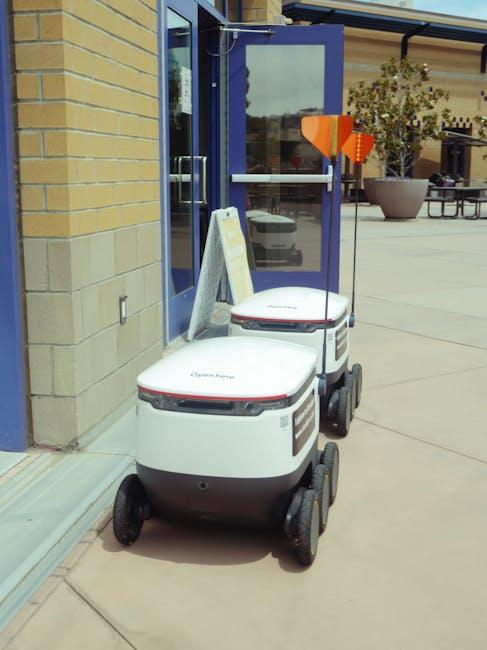In the ever-evolving landscape of customer service, the once simplistic bots that answered routine queries are undergoing a profound transformation. Powered by advances in artificial intelligence, these digital assistants are learning to understand nuance, anticipate needs, and engage with a human-like intuition previously thought impossible. As AI continues to reshape the way businesses interact with their customers, the humble customer service bot is no longer just a tool for automated replies-it is becoming a dynamic, empathetic partner in creating seamless, personalized experiences. This article explores how AI is changing customer service bots, revolutionizing their capabilities, and redefining the future of customer engagement.
The evolution of conversational capabilities in AI customer service bots

Early AI customer service bots were limited to scripted responses, often leaving users frustrated when queries fell outside predefined triggers. However, recent advances in natural language processing and machine learning have transformed these bots into more intuitive and adaptive conversational partners. Today’s AI bots can interpret context, manage multi-turn dialogues, and even detect emotional cues, creating a more fluid and human-like interaction experience. This shift has allowed businesses to offer 24/7 support that feels less robotic and more genuinely helpful.
Key breakthroughs driving this evolution include:
- Context awareness: Bots remember previous interactions within the conversation for more coherent responses.
- Sentiment analysis: Understanding customer mood to tailor replies appropriately.
- Multilingual capabilities: Breaking language barriers for global support coverage.
- Continuous learning: AI systems improve based on real-time user feedback and data.
| Capability | Benefit | Example |
|---|---|---|
| Context Awareness | Maintains conversation flow | Remembers customer issue details |
| Sentiment Analysis | Adjusts tone of responses | Provides empathetic replies |
| Multilingual | Supports global customers | Switches languages mid-chat |
| Machine Learning | Improves accuracy over time | Reduces repeat questions |
Enhancing personalization through advanced data analytics

By harnessing the power of advanced data analytics, customer service bots are becoming remarkably adept at understanding individual preferences and behaviors. This means interactions are no longer generic; instead, bots analyze historical data to tailor responses, anticipate needs, and offer proactive solutions. For instance, by evaluating previous purchases, browsing patterns, and feedback, these AI-driven bots can suggest relevant products or troubleshoot specific issues with precision, fostering a more engaging and efficient customer experience.
Key benefits of this tailored approach include:
- Increased customer satisfaction through personalized recommendations
- Reduced response times by anticipating user intent
- Enhanced problem resolution with context-aware assistance
- Greater brand loyalty driven by meaningful interactions
| Feature | Impact on Personalization |
|---|---|
| Real-time sentiment analysis | Adjusts tone and approach dynamically |
| User purchase history | Powers tailored product suggestions |
| Behavioral pattern recognition | Predicts and resolves issues proactively |
Balancing automation with human touch for optimal customer experience

In today’s evolving digital landscape, the integration of AI in customer service bots has revolutionized efficiency and accessibility, yet the essence of exceptional service remains rooted in human empathy. Striking the right balance means leveraging AI to handle routine inquiries and process data swiftly, allowing human agents to focus on complex, emotionally nuanced situations. This synergy not only enhances response times but also nurtures genuine connections, transforming customer support from transactional to relational.
Key elements of this balance include:
- Seamless escalation: Bots that recognize when to transfer issues to a human agent.
- Personalization: AI that tailors interactions based on customer history without losing warmth.
- Emotional intelligence: Humans interpreting subtle cues that AI might miss.
- Continuous learning: Feedback loops where humans train AI to better handle diverse queries.
| Aspect | Automation Strength | Human Touch Strength |
|---|---|---|
| Speed | Instant responses | Slower, thoughtful replies |
| Empathy | Limited emotional range | Deep emotional understanding |
| Consistency | Uniform answers | Adaptive with nuance |
| Complexity Handling | Basic problems | Complex, ambiguous issues |
Implementing ethical guidelines and transparency in AI interactions

Establishing clear ethical frameworks is paramount as AI-driven customer service bots become more ingrained in everyday interactions. Companies must prioritize respect for user privacy, ensuring data collection is minimal and transparent to foster trust. Additionally, AI should be designed to avoid biases and provide equitable assistance, preventing discrimination across different demographics. Transparent communication about when a customer is speaking to a bot versus a human can also enhance user confidence and satisfaction.
To implement these principles effectively, organizations can adopt practices such as:
- Regular audits of AI decision-making processes to detect and correct biases.
- Clear disclaimers informing customers about data usage and bot identity.
- Inclusive training datasets that reflect diverse populations and scenarios.
- Human oversight mechanisms for escalating complex or sensitive issues.
| Guideline | Benefit |
|---|---|
| Privacy by Design | Enhances customer trust |
| Bias Mitigation | Ensures fairness |
| Transparency Disclosure | Improves clarity |
| Human-AI Collaboration | Boosts resolution quality |
In Retrospect
As AI continues to evolve, customer service bots are no longer just scripted responders but dynamic problem-solvers, capable of understanding and adapting to human needs with remarkable finesse. This transformation marks a new chapter in how businesses connect with their customers-one where technology doesn’t replace the human touch but enriches it. In the ever-changing landscape of customer service, AI-powered bots stand as a testament to innovation’s power to create more meaningful, efficient, and personalized experiences. The future of customer interaction is here, and it speaks the language of intelligence.














